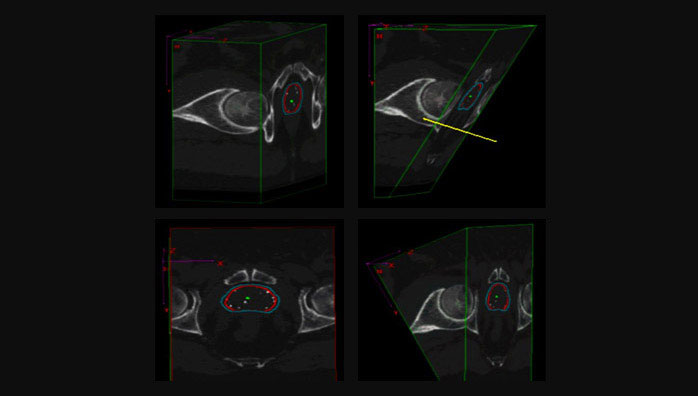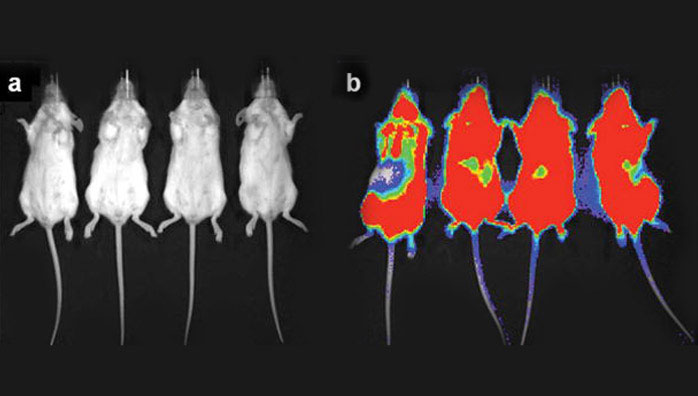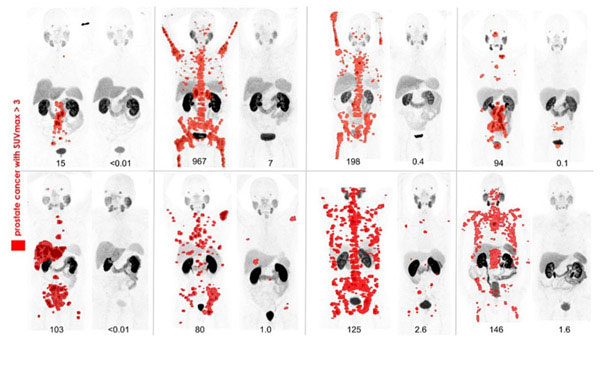60 years ago in the Brookhaven National Laboratory (BNL), the DOE's cutting-edge nuclear research facility located on Long Island, the invention of a new isotope production method gave birth to the field of nuclear medicine.
Developed by radiochemists Walt Tucker, Powell Richards, and Margaret Greene, the seemingly ordinary column-shaped device, nicknamed the " moly cow", is capable of producing a highly useful medical isotope on demand.
First discovered in the 1930s, technetium is the lightest element whose isotopes are all radioactive. Technetium-99m (Tc-99m), first generated through particle bombardment of molybdenum, produces moderately-energic gamma photons as it decays, which was recognized for its potential in non-invasive medical imaging.
But the half-life of the isotope is just over 6 hours, marking an insurmountable problem for transportation and supply chain management. But the invention at the BNL revolutionized how Tc-99m is produced--by simply eluting the generator with an aqueous solution, one can extract Tc-99m from the generator, where its parent isotope Molybdenum-99 (Mo-99, which has a moderate half-life) decays and replenish Tc-99m till the end of its own shelf life.
This breakthrough allowed pharmacists to generate the medical isotope on demand inside healthcare facilities, making it much easier for doctors and patients around the world to access nuclear medicine. It was estimated that over 40 million nuclear imaging procedures are done every year using the isotope, allowing doctors to conduct life-saving diagnoses.
Due to the versatility of its chemical form, scientists have designed a variety of Tc-99m-based radiopharmaceuticals that can target specific parts of the human body, therefore enabling the diagnosis of different diseases.
For instance, Tc-tetrofosmin and Tc-sestamibi are popular imaging tracers for myocardial perfusion; Tc-macroaggregated albumin is used in lung perfusion imaging and venography for detecting deep vein thrombi; Technetium phosphonate such as Tc-MDP and Tc-HDP are formulated for bone imaging. On top of chemicals, Tc-99m can also be used to label red blood cells for blood pool study.
Mid-20th century, the extensive use of Tc-99m rapidly expanded the production of its parent isotope Mo-99 to a handful of research reactors across the world, which sowed the seeds of the later shortage problem. As these reactors are getting close to the end of its intended lifespan and the attempt to bring replacement reactors online failed, the production of mo-99 was repeatedly interrupted due to extended periods of reactor maintenance in the late 2000s.
Related reading: Reactor shutdown threatens world’s medical-isotope supply
Global shortages of Tc-99m prompted researchers to look into other production methods without the use of a fission nuclear reactor. Methods such as neutron capture, proton and X-ray bombardment, and even cyclotron production have been intensively researched. But the output capacity from these alternative processes is quite limited. Meanwhile, as funding start to pour into building low-enriched uranium-fueled reactors (also known as LEUs, a result of the non-proliferating measure adopted by the international nuclear community), many foresee a future where the need of Tc-99m could be entirely covered by these new reactors.
Tc-99m was not the only star in nuclear medicine born out the Brookhaven National Laboratory. In 1976, fluorine-18 (F-18), a positron-emitting isotope was successfully incorporated into a glucose derivative, producing a metabolism tracking radiotracer known as F-18-fluorodeoxyglucose (FDG) that can be used in positron emission tomography (PET) scanning. These days, FDG is among the world’s most widely used radiotracers for cardiology, neurology, and oncology diagnosis, with more than 1.5 million 18FDG PET scans performed annually.
In the last decade, even though imaging modalities such as PET/CT, PET/MRI, and SPECT/CT are still the mainstay of nuclear medicine, the idea of a radiolabeled vehicle that's capable of diagnosis with therapy started to take off. The advent of theranostics transforms the field from "nuclear radiology" to true "nuclear medicine”.
Lutetium-177(Lu-177)-dotatate is a somatostatin analog peptide has been developed for the treatment of gastroenteropancreatic neuroendocrine tumors. Lu-177 not only delivers for precise and potent beta radiation therapy for carcinoid tumors but also emits gamma radiation that enables SPECT imaging for treatment monitoring.
Alpha particle emitting isotope actinium-225 has attracted a lot of attention due to its cytotoxic radiation. Several groups have been working on developing targeting cancer drug using this isotope. A novel optical imaging technique was also underway--the radionuclide's decay triggers Cerenkov luminescence. Capturing the optical signals from the treatment site will allow oncologists to make accurate prognoses.
Under the synergetic efforts of radiochemists, pharmaceutical scientists and radiologists, the field of nuclear medicine continues to advance and evolve. One can expect in the not-too-distant future there will be more novel radiopharmaceuticals that can meet the unmet medical needs, provide life-saving diagnosis and treatment.
The information comes from:
https://www.labroots.com/trending/chemistry-and-physics/13398/nuclear-medicine-origin-crisis-renaissance





 _c105701fdb80a8ace3b1fc6bb8bb3074.jpg)










